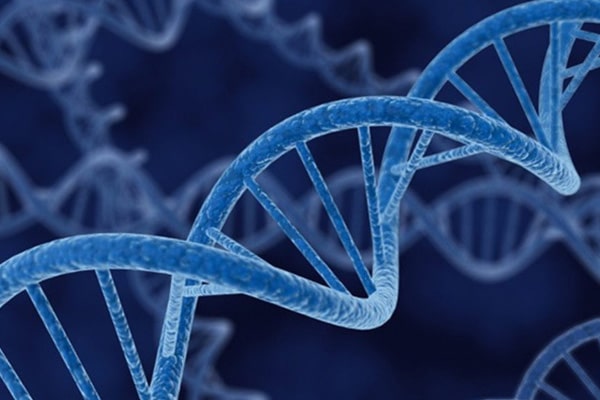Genotoxic Impurities: Understanding the Risks and Regulatory Guidelines
Genotoxic impurities are substances that can cause damage to genetic material, including DNA, which can lead to mutations or cancer. These impurities can be present in pharmaceutical products for various reasons, such as impurities in raw materials, chemical reactions during manufacturing, or degradation during storage.
Genotoxic impurities are essential to consider in drug development because they can cause harm to humans. They can affect the safety and efficacy of drugs and pose a risk to public health. Therefore, evaluating and controlling the presence of genotoxic impurities in drug products is crucial.
As the pharmaceutical industry continues to expand and develop new drugs, ensuring they are safe for human consumption is crucial. A critical aspect of drug safety is the presence of genotoxic impurities (GTIs), which can cause DNA damage and potentially lead to cancer. This article will explore the risks associated with genotoxic impurities, the regulatory guidelines to minimize these risks, and the methods used to detect and quantify GTIs in drug products.
Risks Associated with Genotoxic Impurities
Genotoxic impurities can cause harm to humans by inducing mutations or cancer. The most probable health risks associated with exposure to GTIs can include genetic damage, reproductive toxicity, and carcinogenicity.
Genotoxic impurities can cause harm to humans by damaging genetic material, which can lead to mutations or cancer. These impurities can affect the safety and efficacy of drugs and pose a risk to public health.
The probable health hazard associated with exposure to GTIs can include genetic damage, reproductive toxicity, and carcinogenicity. These risks can lead to adverse effects on human health, and it is crucial to evaluate and control the presence of genotoxic impurities in drug products.
Regulatory Guidelines for Genotoxic Impurities
Regulatory bodies such as the International Council for Harmonisation of Technical Requirements for Pharmaceuticals for Human Use (ICH), the United States Food and Drug Administration (FDA), the European Medicines Agency (EMA), and the Pharmaceuticals and Medical Devices Agency (PMDA) in Japan are involved in setting guidelines for genotoxic impurities.
The key guidelines for assessing and controlling genotoxic impurities in drug products include the ICH M7 guideline, the FDA guidance for industry, and the EMA guideline on the limits of GTIs.
ICH M7 Guidelines
The ICH M7 guideline is a harmonized one that provides a framework for assessing and controlling pharmaceutical genotoxic impurities.
The ICH M7 guideline defines GTIs as substances that can interact with genetic material, including DNA, and cause mutations or cancer. The ICH M7 guideline recommends limits for genotoxic impurities in drug products based on the maximum daily dose of the drug and the potency of the impurities.
The FDA also sets acceptable limits for GTI. For example, the maximum daily intake of a GTI should not exceed 1.5 µg/day for a drug with a lifetime exposure of up to 70 years. The EMA also sets limits for genotoxic impurities. The drug’s therapeutic index determines the acceptable limit for a GTI, with a maximum limit of 1.5 µg/day for drugs with a low therapeutic index.
Methods for Detecting and Quantifying Genotoxic Impurities
Detecting and quantifying their presence is essential to assess and control genotoxic impurities in drug products. This requires using analytical techniques to accurately measure the amount of these impurities in a given sample. Several methods are commonly used for this purpose.
Chromatographic Techniques
Chromatography is a technique used to separate various components of a mixture based on their physical and chemical properties. Several different chromatographic techniques are commonly used to detect genotoxic impurities, including high-performance liquid chromatography (HPLC), gas chromatography (GC), and thin-layer chromatography (TLC).
HPLC is one of the most commonly used techniques for detecting GTIs in drug products. This technique uses stationary and mobile phases to separate different mixture components based on their interactions with these phases. The sample is injected into the column, and the different components are separated as they travel. The components are then detected using a UV detector, and the amount of each component can be quantified.
GC is another chromatographic technique that is commonly used to detect genotoxic impurities. This technique separates components based on their vapor pressure and affinity for the stationary phase. The sample is vaporized and injected into the column, and the different components are separated as they travel through the column. The components are then detected using a detector such as a mass spectrometer, and the amount of each component can be quantified.
TLC is a simpler and less expensive chromatographic technique sometimes used to detect GTIs. This technique separates components based on their affinity for the stationary phase. The sample is applied to a stationary phase, such as a silica gel plate, and the different components are separated as they travel through the plate. The components are then detected using a UV detector, and the amount of each component can be quantified.
Mass Spectrometry
Mass spectrometry is a technique that is used to identify and quantify molecules based on their mass-to-charge ratio. This technique is often used with chromatography to detect and quantify GTIs. The sample is separated using chromatography, and the different components are then ionized and detected using a mass spectrometer. The mass-to-charge ratio of each component can be used to identify the molecule, and the amount of each component can be quantified.
Other Analytical Techniques
Several other analytical techniques can detect genotoxic impurities, including NMR i.e., nuclear magnetic resonance spectroscopy, IR – infrared (IR) spectroscopy, and X-ray crystallography. These techniques are less commonly used than chromatography and mass spectrometry but can be useful in certain situations.
NMR spectroscopy can identify and quantify molecules based on their nuclear magnetic moments. This technique is often used with chromatography to detect and quantify genotoxic impurities.
IR spectroscopy can be used to identify molecules based on their vibrational modes. This technique is less commonly used than other analytical techniques but can be helpful in certain situations.
X-ray crystallography can be used to evaluate the three-dimensional structure of molecules. This technique is less commonly used than other analytical techniques but can be useful in certain situations.
Conclusion
In conclusion, genotoxic impurities are a potential health risk associated with exposure to drug products. Regulatory bodies such as the ICH, FDA, and EMA have set guidelines for assessing and controlling GTIs in drug products. Various analytical techniques can be used to detect and quantify genotoxic impurities, with chromatographic techniques and mass spectrometry being the most commonly used. Ensuring the safety of drug products requires a comprehensive approach that includes the identification and control of GTIs. Pharmaceutical companies must ensure that their products are safe for human consumption.




